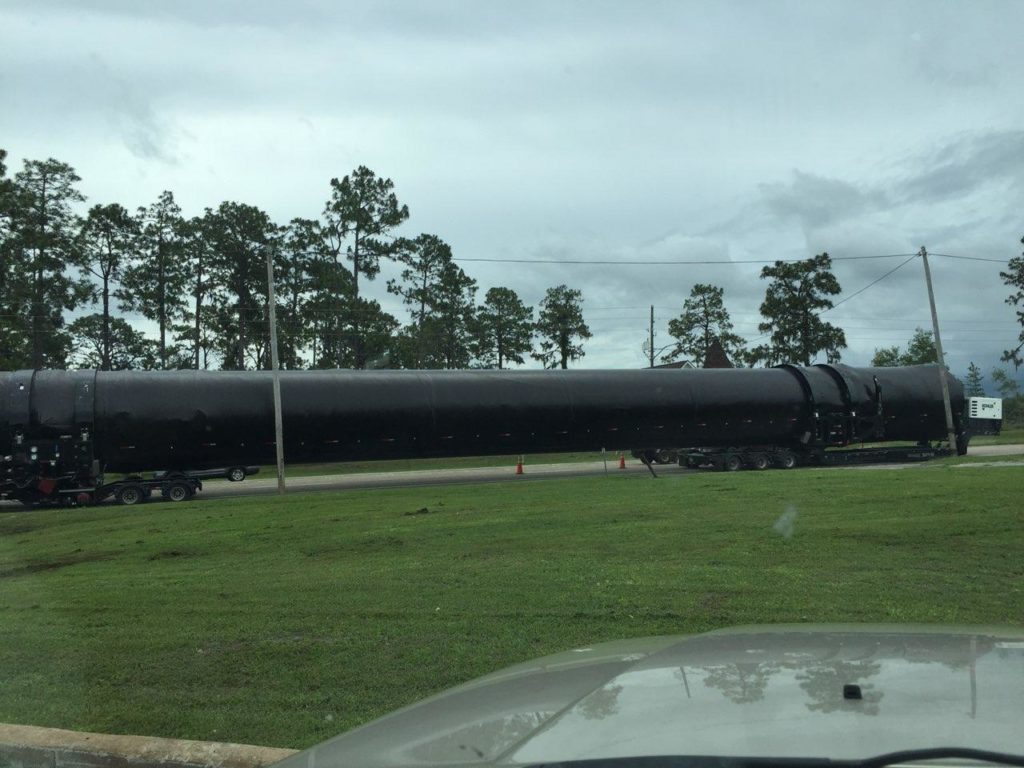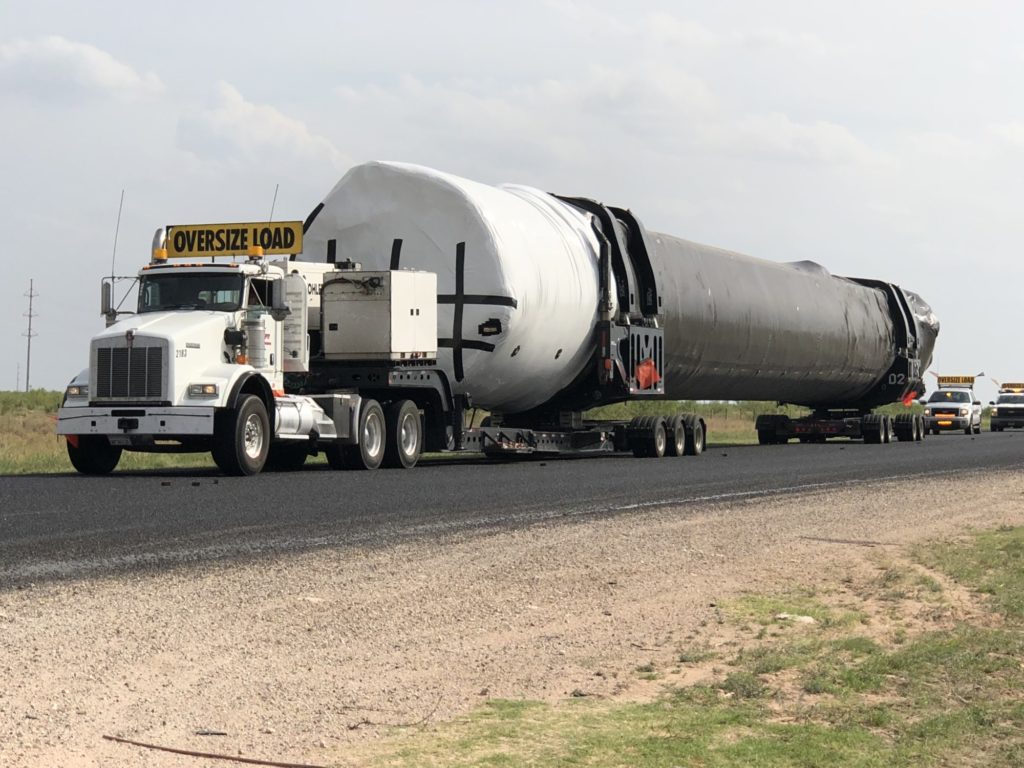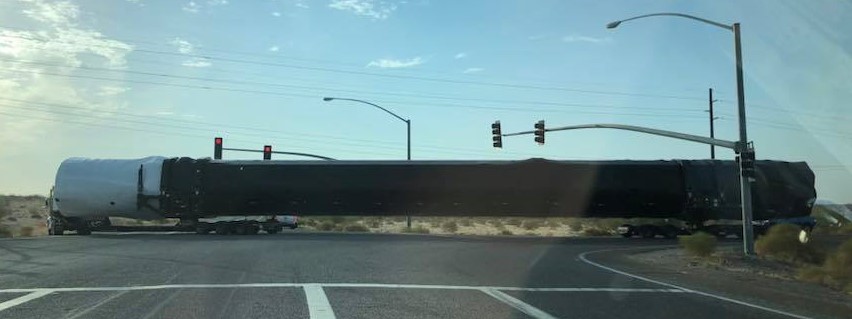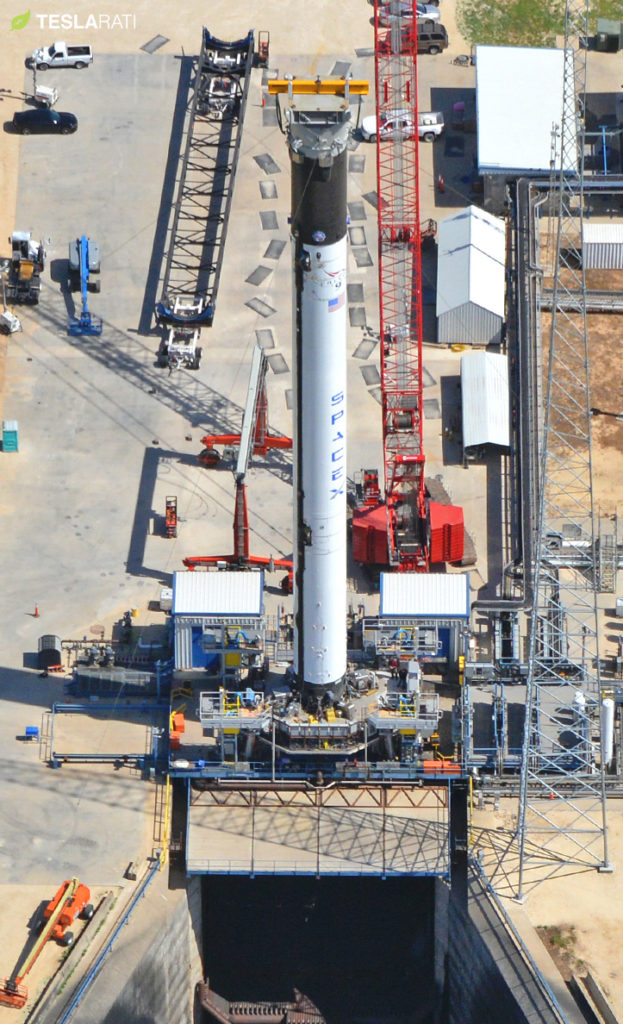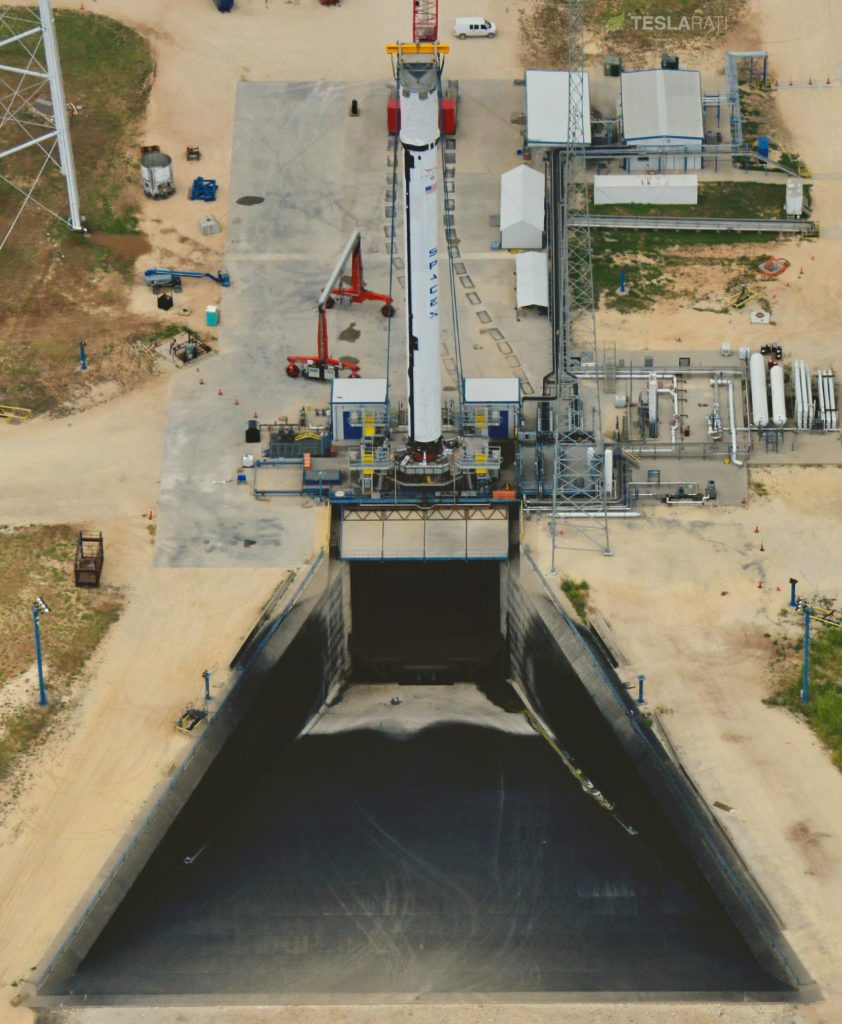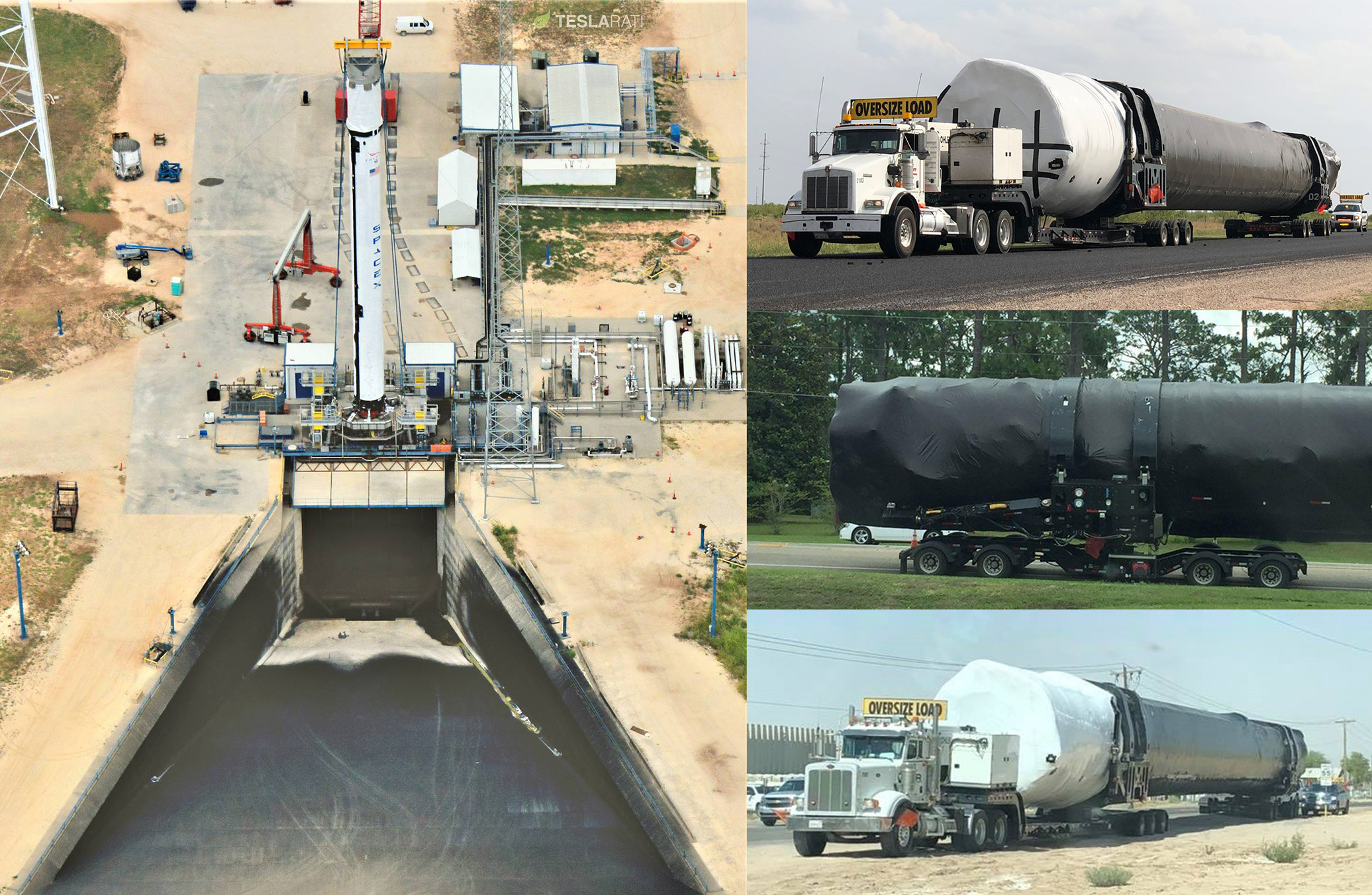
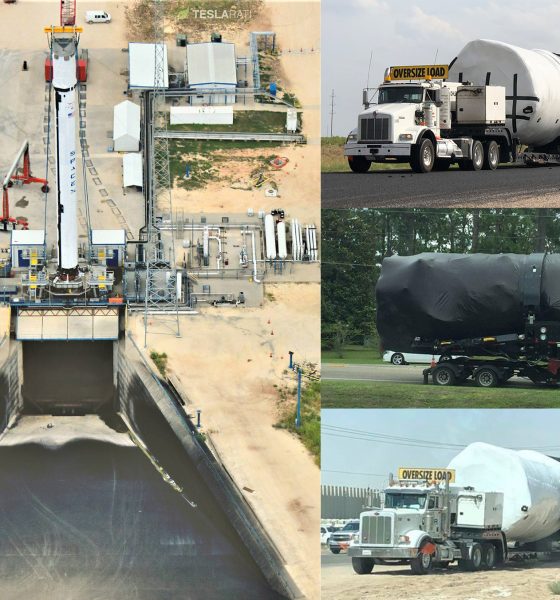
News
SpaceX’s reusable Falcon 9 fleet takes shape as rocket booster production ramps
Per a source involved in SpaceX’s cross-country rocket transport infrastructure, the company continues to beat the expectations of its closest followers, pointing towards an inflection point in the production and testing of new Falcon 9 Block 5 rocket boosters and upper stages.
Building off of a number of Falcon 9 booster, upper stage, and fairing spottings over the past six weeks, it can reasonably be concluded that SpaceX has completed, shipped, tested (i.e. static fires in Texas), and delivered (to launch sites) as many Falcon 9 rockets in six weeks as were shipped, tested, and launched in the preceding five months – perhaps even 30% more.
This extreme production ramp can be attributed almost entirely to the maturation of Falcon 9 Block 5’s design and manufacturing apparatus, owing to the fact that the rocket’s most recent (and theoretically final) upgrade necessitated significant changes to almost every major aspect of the Falcon family. Meanwhile, a considerable amount of time and effort had to be directed towards the optimization and production of the first Falcon Heavy, to some extent an entirely bespoke rocket built off of much older Falcon 9 cores and a center core design unlikely to be repeated.
- Falcon 9 B1047 spotted in Florida just a short trip away from Cape Canaveral, where it will likely launch Telsat 19V in mid-July. (Reddit /u/fatherofzeuss)
- What was likely B1049 spotted heading to McGregor, Texas for static fire testing, June 11. (TeslaMotorsClub /u/nwdiver)
- What has to be B1050 on its way to McGregor for static fire testing, July 6. (anonymous)
With Falcon Heavy completed and launched in February and the last non-Block 5 booster built, launched, and relaunched in the last three months, Falcon 9 Block 5 has for the first time been allowed to become SpaceX’s near-singular focus for manufacturing and testing, both in the Hawthorne factory, the McGregor, TX testing facility, and SpaceX’s three launch pads.
This change in focus likely means that SpaceX was finally able to rid itself of what were effectively multiple SKUs (serial versions) of its workhorse rocket, presumably allowing their supplier and manufacturing apparatus to be significantly streamlined. With low-volume production and limited manufacturing space, multiple SKUs were likely a massive challenge for the Hawthorne factory and the McGregor testing facility, where the stand used to test Falcon 9 boosters likely required significant modifications to support Block 5 static fires. Meanwhile, SpaceX’s three launch pads in Florida and California all needed their own series of upgrades to transfer from Block 4 to Block 5.
- B1047 captured testing in McGregor, Texas, April 2018. (Teslarati/Aero Photo)
- Falcon 9 B1049 spotted on stand in McGregor, TX on June 15.
Regardless, SpaceX has clearly gotten its manufacturing feet back under it and has ever-growing confidence in the nascent Block 5 iteration of Falcon 9. COO and President Gwynne Shotwell noted in a May 2018 CNBC interview that she believed the Hawthorne factory was nominally capable of producing one Merlin engine a day and two Block 5 boosters per month, and this recent burst of activity appears to heartily confirm her estimates. What remains to be seen is if what appears to be a six-week sprint (at least relative to the last year or so of rocket building) will instead prove to be the norm for the second half of 2018 and 2019.
If SpaceX can continue to sustain this extraordinarily rapid-fire pace of rocket production for just the next six months, the company could round out 2018 with a strong start to what Shotwell described would be a “sizable fleet” of Falcon boosters. Block 5 boosters B1047, B1048, and B1049 are now finished with static fire testing in McGregor after shipping from Hawthorne and either at launch sites or on their way, while B1050 most likely just arrived at McGregor for its own static fire. The first successfully launched and recovered Block 5 booster (B1046) was said by CEO Elon Musk to be undergoing a thorough teardown analysis – a process that almost certainly has been completed given the burst of Block 5 shipments and testing – and should be free to support additional launches later this year.
If SpaceX continues to produce nearly two boosters per month, the company could round out 2018 with a fleet of nearly 16 Falcon 9 boosters, each of which has been designed to support anywhere from a handful to a hundred reuses.
Follow us for live updates, peeks behind the scenes, and photos from Teslarati’s East and West Coast photographers.
Teslarati – Instagram – Twitter
Tom Cross – Twitter
Pauline Acalin – Twitter
Eric Ralph – Twitter

News
Tesla on track to break Volkswagen’s historic record in Norway: report
As per Elbil Statistik, Tesla reached 26,127 Norwegian sales so far this year, without counting 13 imported Cybertrucks.

Tesla is surging towards a historic milestone in Norway this month, putting the company on track to break Volkswagen’s long-standing annual sales record in the country.
With 3,732 units sold in November alone and more than 26,000 delivered year-to-date, Tesla is poised to become one of the most successful car brands in Norway’s modern automotive history.
Tesla closes in on Norway’s all-time sales record
Norway’s demand for Tesla vehicles has intensified as drivers attempt to beat the incoming VAT changes on electric cars. Once the VAT changes take effect, the best-selling Model Y could become 50,000 kroner more expensive, as noted in a CarUp report. This has likely caused a rise in sales for Tesla in the country as of late.
As per Elbil Statistik, Tesla reached 26,127 Norwegian sales so far this year, without counting 13 imported Cybertrucks. This places the brand just hundreds of units away from surpassing Volkswagen’s 2016 record of 26,572 annual registrations. With one month left in 2025, it seems all but certain that Tesla will overtake Volkswagen’s all-time record in Norway.
Tesla sees challenges in Sweden
While Norway is delivering historic results, Tesla’s Swedish performance has moved in the opposite direction. Registrations have dropped 68% this year, totaling just 6,147 vehicles so far. November has seen only 291 deliveries, highlighting challenges in the domestic market’s momentum.
Tesla Sweden is also still dealing with an increasing number of union-backed protests and blockades. Despite the pressure, however, Tesla Sweden has maintained its stance, IF Metall union chair Marie Nilsson to urge Elon Musk to reconsider his perception of organized labor. She also stated that Swedish unions are not like their American counterparts, as they are not as combative.
News
Tesla Full Self-Driving lands in a new country, its 7th
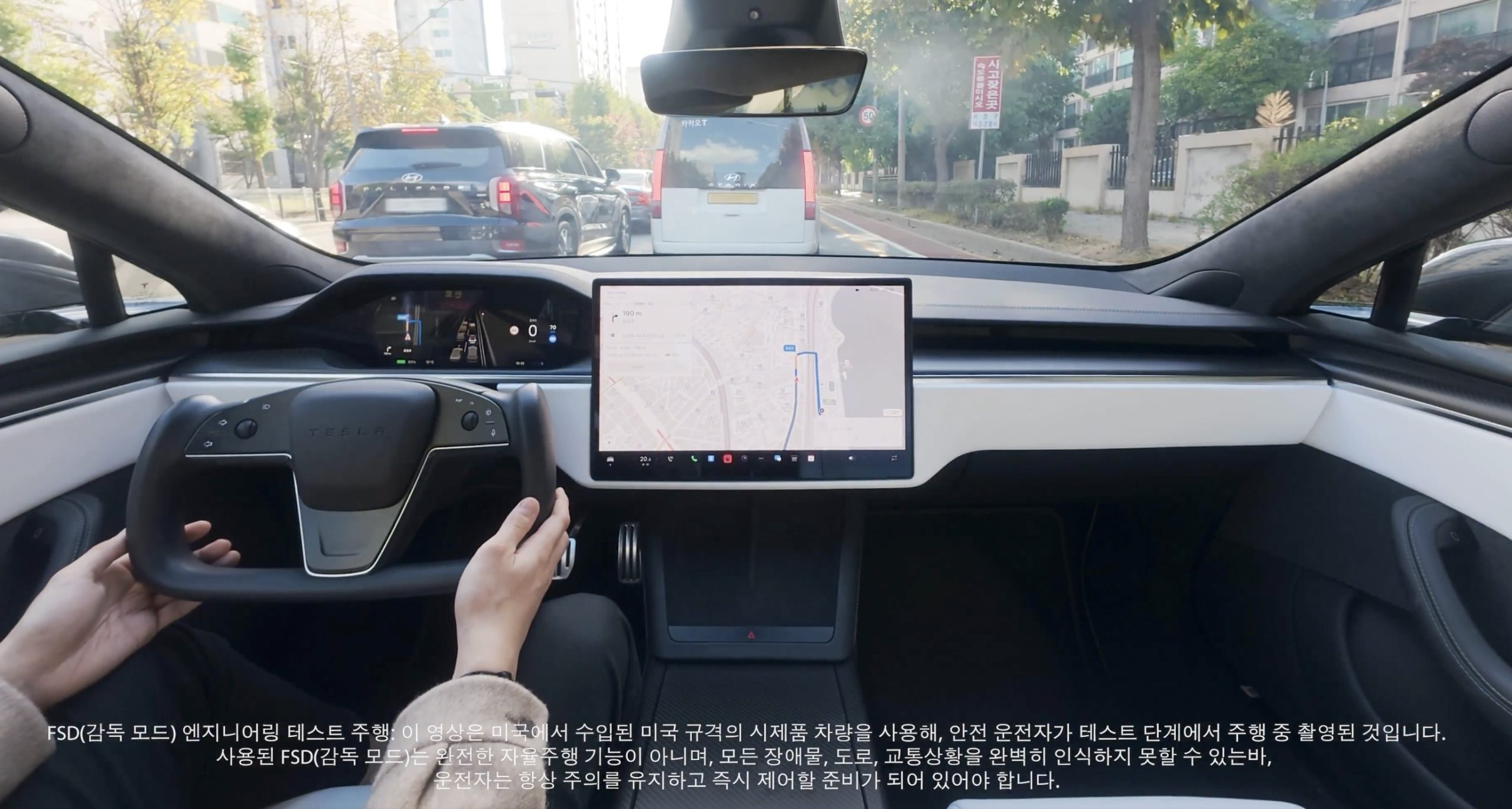
Tesla Full Self-Driving has officially landed in a new country today, its seventh overall after it launched in both Australia and New Zealand earlier this year.
On Sunday, Tesla owners in South Korea reported that the company’s Full Self-Driving (Supervised) had started arriving in their vehicles. Owners reported that it was v14.1.4, which is not the latest version available in other countries, but is one of the most recent releases Tesla has deployed to drivers:
From 6 to 7
Tesla Full Self-Driving has launched in South Korea; the 7th country to have FSD https://t.co/X6gm1SyoxV
— TESLARATI (@Teslarati) November 23, 2025
This marks the seventh country in which Tesla has enabled its Full Self-Driving suite, following the United States and Puerto Rico, Canada, China, Mexico, Australia, and New Zealand.
Tesla launched Full Self-Driving most recently in Australia and New Zealand about three months ago. The expansion is a major breakthrough for the company as it aims to launch Full Self-Driving on a global scale.
However, the company’s biggest challenge thus far has been getting European regulatory agencies to handle the red tape that has inhibited Tesla from launching its semi-autonomous driving suite on the continent. Recently, it admitted that it sees a pathway through Dutch regulatory bodies, which seem to be the most willing to work with Tesla to get FSD in Europe.
Tesla Full Self-Driving appears to be heading to Europe soon
The company said that it has driven over 1 million kilometers safely on European roads across 17 different countries in internal testing. But its path to success will be by “partnering with the Dutch approval authority RDW to gain exemption for the feature. This involves proving compliance with existing regulations (UN-R-171 DCAS) + filing an exemption (EU Article 39) for yet-to-be-regulated behaviors like Level 2 systems off-highway, system-initiated lane changes with hands-off the wheel, etc.”
Perhaps the expansion into Europe will be the biggest challenge for Tesla, but it could also yield major results and advantages for the company moving forward. Tesla said it hopes to have FSD available in Europe sometime early next year.
For now, the expansion in South Korea is the latest win for Tesla and its self-driving efforts. In the U.S., it now turns its focus toward fully autonomous operation, as it works with state agencies to launch Robotaxi outside of Texas, California, and most recently, Arizona.
Elon Musk
Tesla CEO Elon Musk teases insane capabilities of next major FSD update
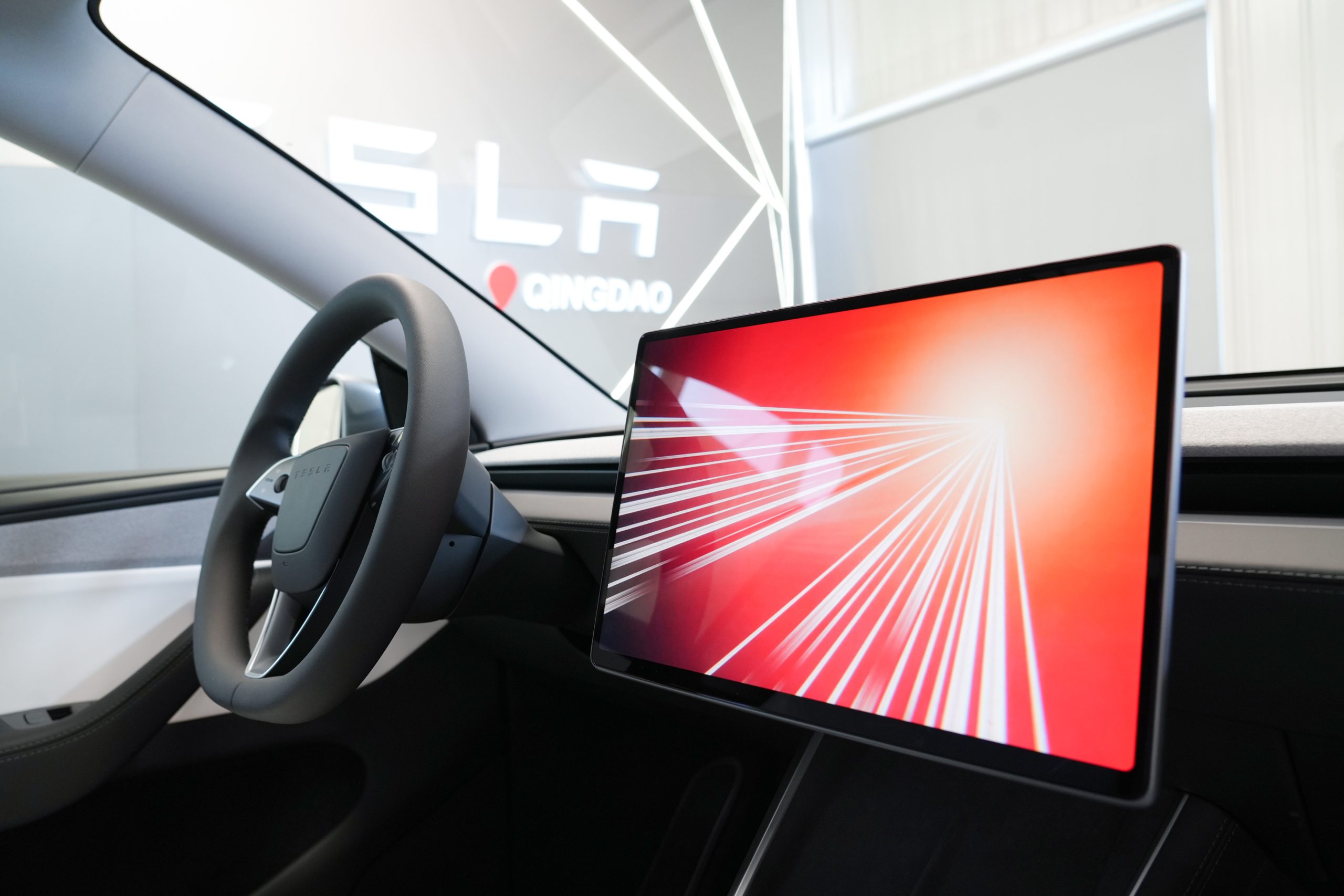
Tesla CEO Elon Musk teased the insane capabilities of the next major Full Self-Driving update just hours after the company rolled out version 14.2 to owners.
Tesla Full Self-Driving v14.2 had some major improvements from the previous iteration of v14.1.x. We were on v14.1.7, the most advanced configuration of the v14.1 family, before Tesla transitioned us and others to v14.2.
However, Musk has said that the improvements coming in the next major update, which will be v14.3, will be where “the last big piece of the puzzle finally lands.”
14.3 is where the last big piece of the puzzle finally lands
— Elon Musk (@elonmusk) November 21, 2025
There were some major improvements with v14.2, most notably, Tesla seemed to narrow in on the triggers that caused issues with hesitation and brake stabbing in v14.1.x.
One of the most discussed issues with the past rollout was that of brake stabbing, where the vehicle would contemplate proceeding with a route as traffic was coming from other directions.
We experienced it most frequently at intersections, especially four-way stop signs.
Elon Musk hints at when Tesla can fix this FSD complaint with v14
In our review of it yesterday, it was evident that this issue had been resolved, at least to the extent that we had no issues with it in a 62-minute drive, which you can watch here.
Some owners also reported a more relaxed driver monitoring system, which is something Tesla said it was working on as it hopes to allow drivers to text during operation in the coming months. We did not test this, as laws in Pennsylvania prohibit the use of phones at any time due to the new Paul Miller’s Law, which took effect earlier this year.
However, the improvements indicate that Tesla is certainly headed toward a much more sentient FSD experience, so much so that Musk’s language seems to be more indicative of a more relaxed experience in terms of overall supervision from the driver, especially with v14.3.
Musk did not release or discuss a definitive timeline for the release of v14.3, especially as v14.2 just rolled out to Early Access Program (EAP) members yesterday. However, v14.1 rolled out to Tesla owners just a few weeks ago in late 2025. There is the potential that v14.3 could be part of the coming Holiday Update, or potentially in a release of its own before the New Year.
